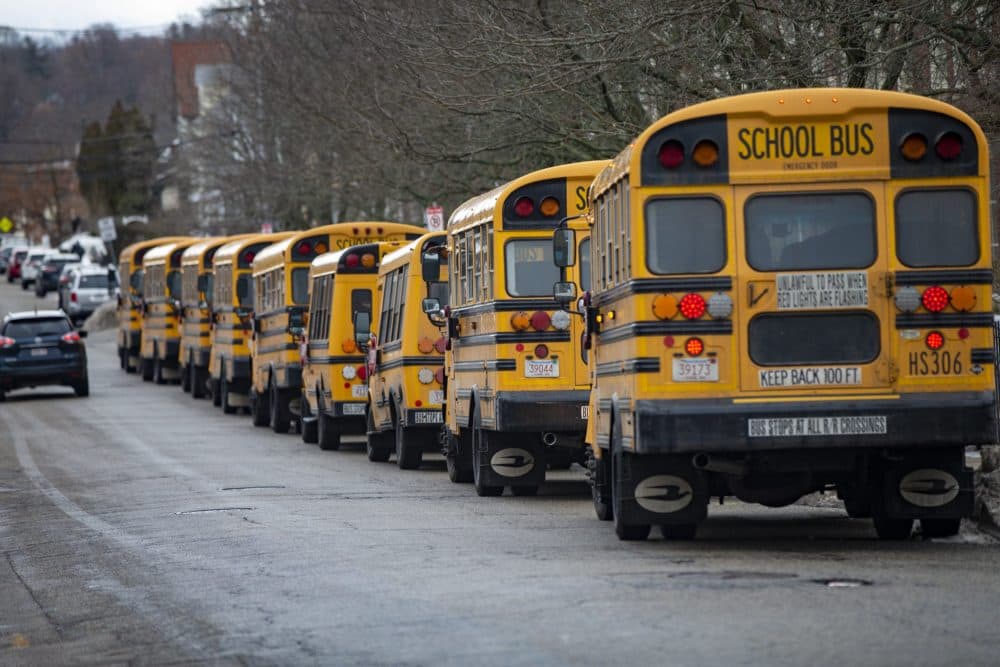Advertisement
Commentary
A return to pre-pandemic 'normal' is not the way to fix Mass. schools

Since the start of the pandemic, Gov. Charlie Baker and Commissioner Jeffrey Riley have repeatedly expressed a commitment to a “return to normalcy” in our schools. The way to respond to 18 months of disruption to learning, they believed, was a return to school — as normal.
For those of us who work in schools, and attend schools, this notion of “normalcy” didn’t resonate. Why? Because even prior to the pandemic, “normal” wasn't working. Too many young people weren’t getting their academic or socio-emotional needs met. Too many students felt like what we were offering in terms of education didn’t align with what they wanted for themselves. Too many students felt churned through a system that through its schedule, structure, and offerings, communicated that they were not at the center of its design.
In the early days of the pandemic, novelist Arundhati Roy offered us the idea that the pandemic could be a portal into a different way of living. An opportunity to vision and build new ways of being that were more humane, more inclusive, less destructive. Instead of seeing the pandemic as a portal when it came to education in the state of Massachusetts, Baker and Riley doubled down on the failures of the before times.
Instead of seeing the pandemic as a portal when it came to education in the state of Massachusetts, Baker and Riley doubled down on the failures of the before times.
We returned to school with “normal” levels of staffing instead of reduced class sizes and increased staffing to address the learning interruption of the pandemic, and the further staffing disruption that variants would cause. We returned to “normal” expectations around content and standards, instead of adjusted frameworks that accommodate for the interruption and its impact. Our students are now sitting for “normal” standardized tests, which create stress and anxiety even in the best of times, and more during a year when COVID has caused both students and teachers to miss long stretches of schooling due to illness. We saw only a slight increase in mental health staffing, and nothing like what was required to meet the increased need. Too many of our school buildings still haven't updated their ventilation systems: windows don’t open, and mechanical ventilation is often non-existent.
Anyone in a school could have told you, and did tell you, that this approach was a failed one. And now we have close to a school year’s worth of data to confirm the failures of normalcy. Adolescent mental health is at a level of crisis that we’ve never seen before. Seeing students struggle and not having appropriate support to meet their needs is putting a whole new level of strain on teachers, already strained by having to re-invent their profession multiple times over the past three years. Burnout has close to half of educators “looking for the exits”.
Prior to the pandemic, I used to think I was a pretty good teacher. Students learned about important topics in my classes. They had thoughtful conversations. They built strong relationships. They would tell me years later that they still remembered things we learned together.
This year, I have felt like a failure every day that I’ve been in the classroom. Despite every effort to respond to student needs, to continually redesign my curriculum and structures to meet what I’m seeing, I struggle to get my students to engage. I struggle to build strong learning relationships, and to build a cohesive learning community. And when I ask students what is happening to them, what is making school so hard this year, their consistent response is that it is just "too much." It’s all too much. The early start times, the six-period day, the breakneck pace of academic expectation, the high stakes of standardized testing, the lack of meaningful time for taking care of mental health — it is an accumulation that is pulling them under.
Advertisement
This year, I have felt like a failure every day that I’ve been in the classroom.
Meanwhile, Massachusetts Board of Elementary and Secondary Education member Michael Moriarty expressed shock at the April meeting regarding conditions in schools right now, stating that he didn’t anticipate that the level of crisis would be so large. Which is to say that even the people responsible for holding the governor and commissioner accountable for their school plans bought the “normalcy” rhetoric. They didn’t see fit to ask people in schools whether the plan aligned with what they thought students or teachers might need in order to successfully navigate this school year.
Here’s the thing: the people seemingly most obsessed with normalcy are those who were least impacted by the state of pre-COVID “normal” in schools, the people least impacted by the havoc COVID wreaked on our most vulnerable students and their families, the people least impacted by the ongoing trauma being expressed by adults and students alike. And instead of recognizing their lack of proximity, and seeking to understand what’s happening on the ground so as to build a new vision for what school should be and do, they have chosen to make policy from a fortress built from the stones of an old, failed normal.
Our Congresswoman Ayanna Pressley says, “The people closest to the pain should be closest to the power,” but when it comes to public education in the state of Massachusetts, the opposite is true. The people furthest from the pain are in charge, and their fixation with normalcy is exacerbating the crisis in our schools.
